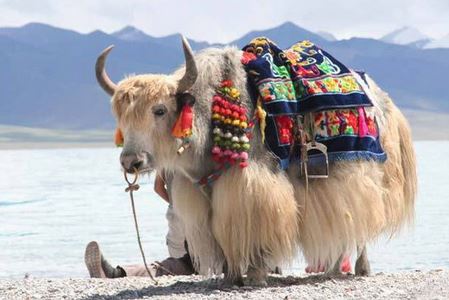Note4Students
From UPSC perspective, the following things are important :
Prelims level: Himalayan Yaks

Why in the News?
Around 40 Chinese yaks ventured into Indian Territory in the “Demchok” area of eastern Ladakh and are currently under the control of the local villagers.
Grazing land issue at LAC:
|
About Himalayan Yaks in India:
| Details | |
| Species | Belongs to the Bovini tribe, including bison, buffaloes, and cattle. |
| Adaptation | Can tolerate extreme cold, down to -40°C; adapted for high altitudes with long, insulating hair. |
| Cultural Significance | Valued by Himalayan peoples;
Linked to Tibetan Buddhism legend of Rinpoche. |
| Raising Method | Traditionally reared under a transhumance system; involves significant hardship. |
| Habitat | Endemic to the Tibetan Plateau and high-altitude regions. |
| Altitude Preference | Thrives above 14,000 feet; typically climbs to 20,000 feet and rarely descends below 12,000 feet. |
| Yak-Rearing States in India | Arunachal Pradesh, Sikkim, Uttarakhand, Himachal Pradesh, Jammu & Kashmir. |
| Population Decline | 2019 census: 58,000 yaks in India, a 25% drop from 2012; decline due to low remuneration and market. |
| Significance | Provides crucial nutritional and livelihood security for pastoral nomads in high-altitude regions. |
| Threats | Climate change causing heat stress; inbreeding due to closed borders limiting genetic diversity. |
| Protection Status* | – IUCN Red List: Vulnerable – CITES: Appendix I – Indian Wildlife Act: Schedule I |
| Food Status* | Approved as a ‘food animal’ by the Food Safety and Standard Authority of India (FSSAI). |
PYQ:[2016] What is/are unique about ‘Kharai camel’, a breed found in India? 1. It is capable of swimming up to three kilometres in seawater. 2. It survives by grazing on mangroves. 3. It lives in the wild and cannot be domesticated. Select the correct answer using the codes given below: (a) 1 and 2 only (b) 3 only (c) 1 and 3 only (d) 1, 2 and 3 |
Get an IAS/IPS ranker as your 1: 1 personal mentor for UPSC 2024
